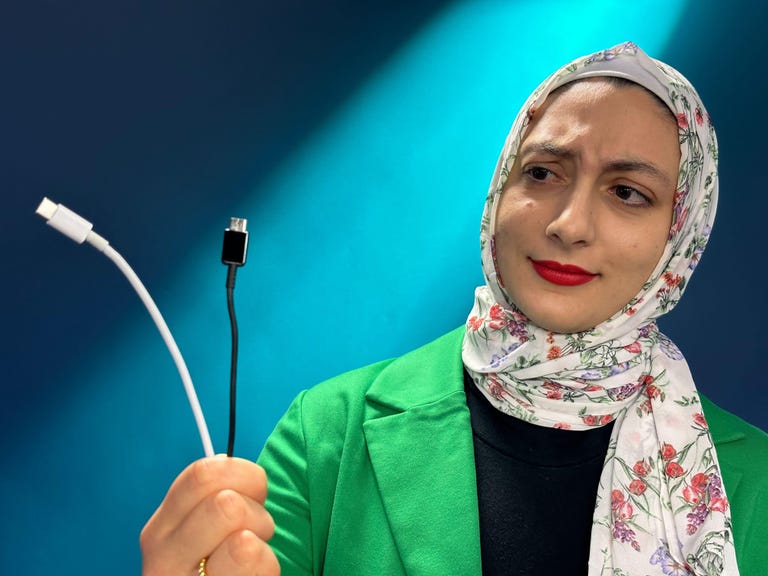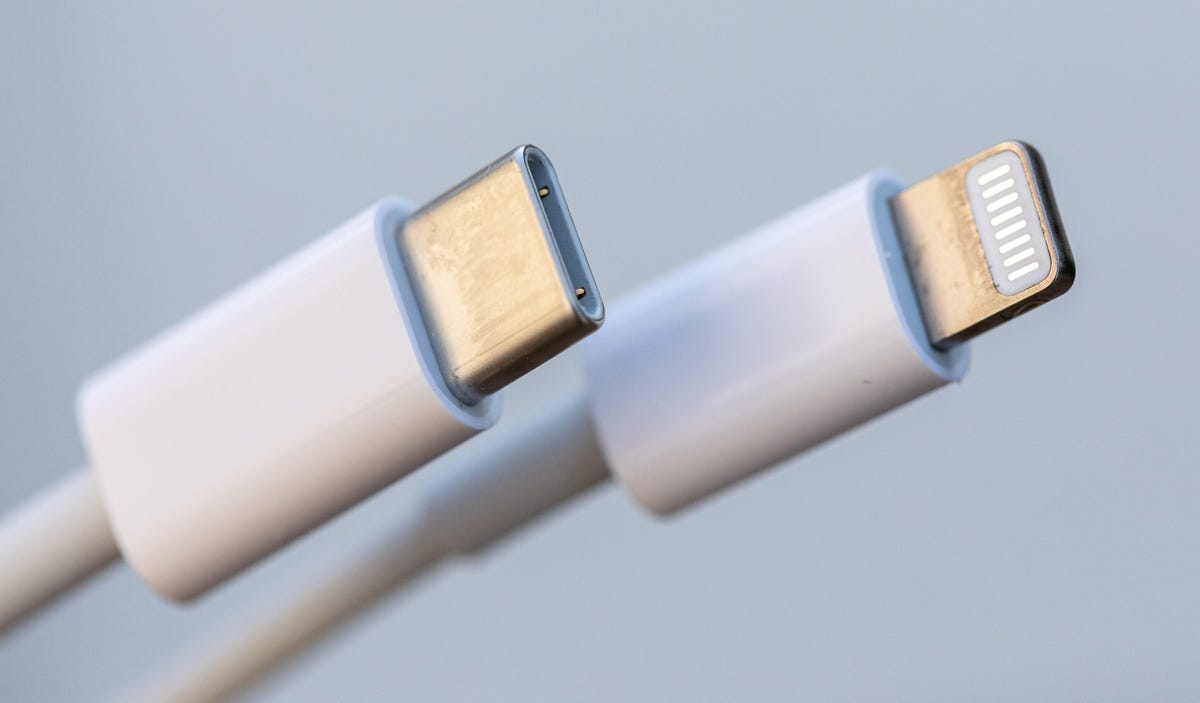I love USB-C, the data and charging port that I first encountered in my 2016 MacBook Pro. It’s spread to almost all the electronics in my life, and now Apple has built it into the new iPhone 15 smartphones and AirPods Pro 2 earbuds.
I wanted a USB-C iPhone in 2018, back when Apple first added that tech to the iPad Pro. In 2021, I grew more optimistic that it might happen someday after Apple spread USB-C to lower-end iPads. And though I’m skeptical that regulation is the best tool for product development, I’m not displeased that the European Union pushed Apple toward USB-C.
So yes, I’m psyched the iPhone 15 models all have USB-C ports so those USB-C charging cables work for what’s arguably the world’s most important electronics device. But here’s the bad news Apple didn’t share at its iPhone launch event: Millions of people entering the USB-C ecosystem will encounter the technology’s ugly side too.
The utility and flexibility of USB-C are tainted by confusion over just what the heck comes along with that USB-C port on the side of a device and the cable you plug into it. In short, it’s not always obvious whether your device or cable supports high-speed data transfer, high electrical power for fast charging, both or neither.
See also: Apple iPhone 15 Pro and 15 Pro Max Review: Love at First Zoom
The iPhone 15 ships with a USB-C port and charging cable that give customers a taste of the trouble. That cable is fine for charging but transfers data at a mere 480 megabits per second, the poky speed that arrived with the USB 2.0 standard from 2000.
See also: Apple iPhone 15 and 15 Plus Review: Pro Features for Less
During its launch event, Apple conspicuously avoided saying anything about how fast the iPhone 15 USB-C port is, but the spec sheet says it’s only the slow USB 2.0. The iPhone 15 Pro models will work at the more useful 10Gpbs speed of USB 3, but only ship with a USB 2.0 cable.


USB-C cables like the one at left have an oval connector a smidgen larger than Apple’s Lightning cables, left.
USB-C transition less painful than Lightning
There was plenty of kvetching when Apple switched to the Lightning port, even though it was clear Lightning was superior to the bulky, fragile 30-pin connector that preceded it. I’m expecting more complaints with the iPhone’s USB-C switch as people discover that all those cables they have stashed in glove boxes, office desks, school backpacks and bedside tables have become obsolete.
But the good news is that USB-C is already very well established, and not just on MacBooks and many iPads. The oval-shaped connector is on modern Android phones, Windows laptops, Nintendo Switch gaming consoles, iPad Pro and Air tablets, Sony noise-canceling headphones, and countless other devices.
That means there’s a good chance a lot of us already have USB-C cables lying around. And I am very excited about being able to use my beloved Google Pixel wired earbuds in more devices.
Apple’s gripe that the EU’s USB-C requirement would generate e-waste is not entirely without merit. But I suspect averaged out over the next three years or so, USB-C iPhones won’t mean a massive surge of USB-C cable purchases and Lightning cable trash. It’ll just be the cables you do buy will be useful for more devices, and hopefully you won’t have to buy, carry, and stash as many. (And, I might add, if Apple were truly concerned about this e-waste issue, it could have given us Lightning cables that didn’t fray into junk after a year or two of use.)
When I talk to USB-IF executives about the USB-C’s labeling problems, they assure me that most people don’t notice any sort of bother about USB speeds and charging rates, and that the gradually maturing technology will mean incompatibilities and product shortcomings eventually will slip into the back of our collective junk drawers.
I hope so. For me, the flexibility and power of USB-C is well worth the pain. But I do wish there wasn’t so much pain.

